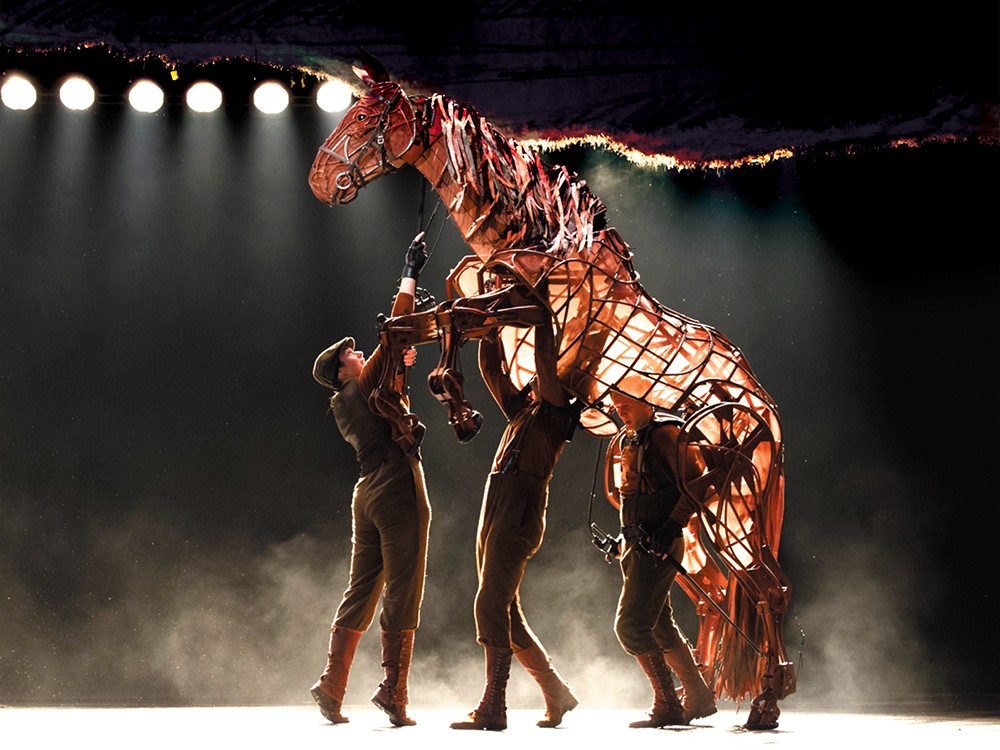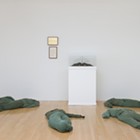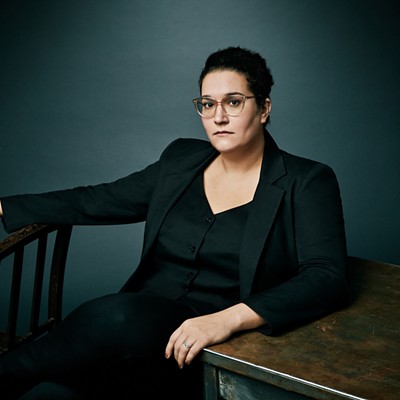The main character of War Horse is indeed a horse. But for obvious reasons, using live horses in the stage-adapted version of the 1982 children’s book by Michael Morpurgo was a no-go. Instead, War Horse’s creators went for a literally more predictable and controllable variation: puppets.
And depending on who you ask, the eerily lifelike horse puppets — mainly the play’s lead horse Joey — are considered the real stars of the performance.
War Horse’s puppets are a work of art in and of themselves, handcrafted from cane, aluminum, leather, aircraft cables and mesh fabric by South Africa’s Handspring Puppet Company. Making the production’s several horses — including Joey — come to life are four teams of three actors/puppeteers who synchronize and improvise their movements and sounds with such skill, the audience could forget the horse in front of them is actually played by three actors and not an actual animal.
Jon Riddleberger, a 26-year-old New Jersey native, plays the role of Joey’s “Head” in the current U.S. tour of War Horse. He’s joined by Patrick Osteen, 24, as Joey’s “Heart” and Jessica Krueger as Joey’s “Hind.” Between the three of them, the mechanical-looking frame of Joey’s body comes to life, complete with the vocalizations and characteristic mannerisms you’d see from any living, breathing horse.
It’s easy for the audience to become attached to Joey, Riddleberger says.
“Joey is spirited, and that covers a lot of him, but he’s at the same time incredibly affectionate and trusting,” Riddleberger says. “He’s also incredibly stubborn and, like a lot of animals, he can tell a good person from a bad person.”
Set against the backdrop of World War I, War Horse explores the unspoken bond between human and animal through teenager Albert Narracott, who cares for Joey from the time the horse is a foal until it’s sold to the British cavalry at the onset of the war. Young Albert vows to reunite with his beloved horse, and eventually lies about his age to enlist in the British army on a seemingly impossible quest to find Joey and bring him home.
The five-time Tony Award-winning War Horse has been traveling across the U.S. since June of last year, and makes its much-anticipated stop in Spokane next week for eight performances from March 5-9, at the INB Performing Arts Center.
Through the 2½-hour performance as Joey’s head, Riddleberger, dressed in period attire, stands alongside the life-size 120-pound puppet — the other two actors are inside its body — manipulating the movements of its head, neck and ears. Riddleberger makes Joey toss his head when he’s excited, or alertly flick his ears when he’s spoken to.
The end goal, he says, is to become the horse, and essentially disappear from the audience’s perspective. At the same time, Riddleberger has to make sure his movements of Joey’s head complement and match the maneuvers controlled by his acting partners inside the horse’s frame.
Playing War Horse’s Joey isn’t without some highly physical challenges, the puppeteers say. Riddleberger’s arms are held above his shoulders, and often above his head, for most of the performance. Osteen and Krueger carry the puppet’s frame, in many scenes made more than twice as heavy with the addition of an adult rider.
All of War Horse’s puppeteers, most ranging in age from 23 to 31, have undergone formal training in various types of physical performance, whether that be dance, acrobatics, gymnastics or other highly specialized movement training, Riddleberger says.
Because of the intense physical requirements, the puppet teams rotate roles for each performance. For one show Riddleberger, Osteen and Krueger will play Joey; the next night they’ll become regular stage actors playing townspeople or soldiers. The three also sometimes play the role of secondary horse Topthorn.
“It gives us a break from the horse, and it’s also great because we have four different Joeys the audience can see. All the teams have a bit of a different behavior and personality,” Riddleberger says. “It lets the show be very alive every night.”
As Joey’s “heart,” Osteen moves the puppet’s front two legs and creates breathing movements to give him life. Krueger bears the weight of the puppet’s back half and flicks its tail, timing her movements of the back legs to match Osteen’s manipulations of the front legs.
Though Joey’s movements are scripted and choreographed through the performance, the three actors playing the leading equine still end up partially improvising their roles. When Joey needs to vocalize his feelings through a whinny, nicker or heaving sigh, the three puppeteers are responsible for mimicking — as closely as they can — a horse’s intonations.
“One thing about a horse is that its lungs are three times the size of a human, so having three of us gives us a good attempt to match a horse’s sounds,” says Riddleberger. “We can really play off each other, because when you listen to a horse whinny or scream, there are so many layers inside of that sound. Having three of us allows us in a way to harmonize with each other.”
War Horse • March 5-9, showtimes vary • $37.50-$97.50 • INB Performing Arts Center • 334 W. Spokane Falls Blvd. • inbpac.com • 279-7000





















